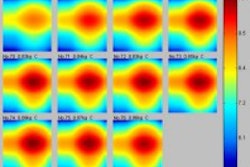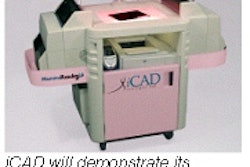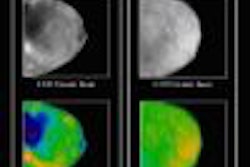The idea of using nonphysicians to assist in the diagnostic process is not new; creating physician extender jobs has been floated more than once as a way of stemming personnel shortages in imaging. But do these nonphysicians have the skills to take on more diagnostic responsibilities? Researchers from Pittsburgh set out to test this theory by assessing whether mammography technologists had the ability to classify screening mammograms.
"Mammography technologists have frequent and direct access to the acquired images, and many technologists have a large amount of experience reviewing mammograms with both negative and abnormal findings for quality assurance purposes," wrote lead author Dr. Jules Sumkin in the American Journal of Roentgenology. Sumkin and his colleagues are from the University of Pittsburgh and Magee-Womens Hospital (January 2003, Vol.180:1, pp.253-256).
This study was performed at Magee, as well as at five community satellite breast imaging facilities. The 33 RTs who participated did not receive any training for this project, but their experience level in mammography ranged from 2-26 years.
After reviewing a screening mammogram, the RTs completed a form that included basic information (date of exam, time, etc.) as well as one of two categories into which they classified the mammograms. These categories were:
- Patient requires additional workup, such as additional views, sonography, or biopsy.
- Patient requires no workup and may return in a year.
The authors calculated their results by computing the proportion of cases in which the RTs and radiologists agreed or disagreed on the classifications within these categories.
Data collection was performed over six weeks for a total of 3,019 exams reviewed and rated by the RTs. The participants were not asked to identify the specific reason for recommending an additional workup or the specific location of a suspected abnormality.
The nine radiologists -- whose experience in breast imaging ranged from 3 to 20 years -- then reviewed and interpreted the mammograms as part of their routine work.
"Our verified false-negative rate for this group of radiologists for 1999 and 2000 was approximately 0.75 false-negative findings per 10,000 interpretations," the authors wrote.
The radiologists’ interpretations were considered the gold standard in this study. The cases were divided into five categories:
- Suspicious microcalcifications.
- Suspicious nodule or mass.
- Asymmetry.
- Palpable mass not visualized on screening mammogram.
- Miscellaneous findings.
According to the results, the RTs and the radiologists agreed on the negative findings in 77% (2,284 out of 2,985) of the cases. They agreed that follow-up was necessary in 5% of the total cases.
Disagreement occurred in 18% of the cases overall. In 12% of the cases, the RTs recommended follow-up but the physicians did not; the opposite occurred in 6%. In seven of the 2,985 exams, malignancy was verified, the authors reported.
"The largest difference between recommendations for recall occurred in the subgroup of cases for which the reason stated by the radiologist was asymmetry or architectural distortion," they wrote. "Of the 72 cases recalled by the radiologists for this reason, only 21 were recommended for recall by the technologists."
Of the 832 cases rated by the radiologists as benign (BI-RADS 2) in at least one breast, the RTs recommended follow-up for 22% of these cases. Of the 175 cases recommended for follow-up by the radiologists, 17 underwent biopsy and two cases were deemed malignant.
In their conclusion, the authors noted that more than 80% of the cases were classified the same by the RTs and the radiologists. In addition, the RTs identified most of the cases that later proved to be malignant. Given that the RTs did not undergo special training for this study, they achieved a "reasonable level of accuracy in classifying screening mammograms."
The authors suggested that these promising results were worth building on with further study, which should include classification training for the technologists.
By Shalmali PalAuntMinnie.com staff writer
January 22, 2003
Related Reading
One-day BI-RADS course improves feature analysis in breast imaging, October 4, 2002
Radiology extenders -- the answer to the RT personnel shortage?, September 19, 2002
For ease of use, FFDM wins points with RTs, April 5, 2002
Mammography reader volume directly linked to diagnostic accuracy, March 6, 2002
Copyright © 2003 AuntMinnie.com



















